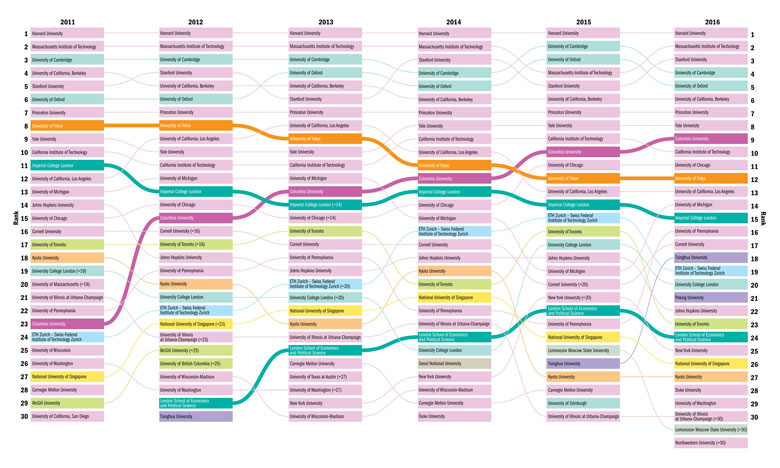View Times Higher Education's full list of the world's most prestigious universities
Each country, below, is colour coded (pink for the US, turquoise for the UK, etc) to give a visual image of national strength, and we have highlighted some institutions to show their movement over time.
The US’ Columbia University has been a consistent riser, whereas the University of Tokyo looks to be in a slow reputational decline.
The reputations of two of London’s institutions, science-led Imperial College and social science-led London School of Economics and Political Science, are converging.
Claim a free copy of the full World Reputation Rankings 2016 digital supplement
How the top 30 places have changed in the World Reputation Rankings
后记
Print headline: Track records





